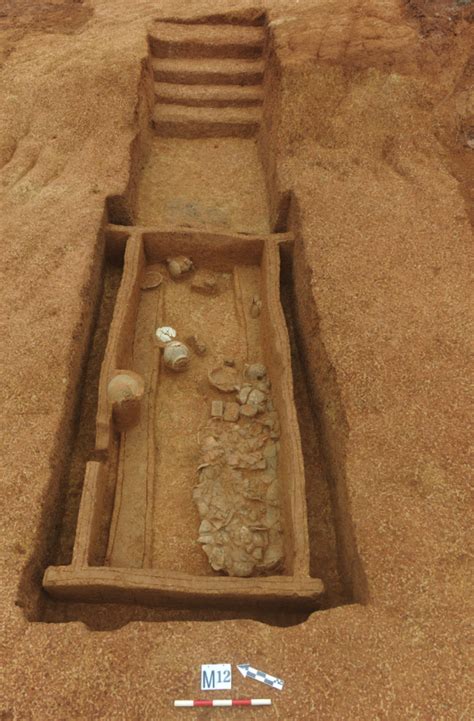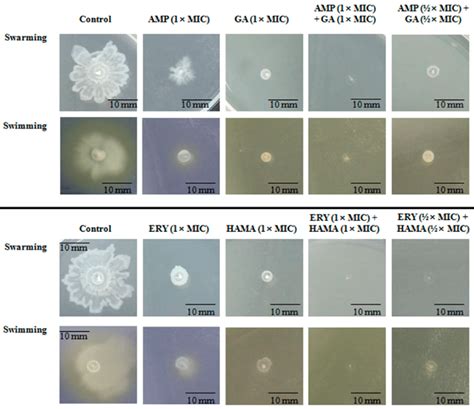
Archaeologists in Peru have unearthed three ancient tombs belonging to an elite family of the Wari culture, revealing a trove of well-preserved artifacts including textiles, ceramics, and precious metal objects that offer unprecedented insight into the pre-Inca civilization.
A team of researchers led by Peruvian archaeologist Krzysztof Makowski Hanula discovered the burial complex at the Castillo de Huarmey archaeological site, approximately 180 miles north of Lima. The tombs, undisturbed for over a millennium, contained the remains of Wari elites, likely members of a powerful family, along with a wealth of funerary offerings indicative of their high social status. “This finding confirms that individuals of high social status were buried here, and that the Wari culture had a significant presence in this area,” stated Dr. Makowski.
The Wari civilization, which flourished between 600 and 1000 AD, predates the Inca Empire and is known for its sophisticated urban planning, complex social organization, and artistic achievements. The discovery at Castillo de Huarmey provides a rare glimpse into the burial practices, social hierarchy, and material culture of this influential Andean society.
Among the most remarkable finds are exceptionally well-preserved textiles, demonstrating the Wari’s mastery of weaving and dyeing techniques. The vibrant colors and intricate designs of these fabrics offer valuable information about Wari aesthetics, beliefs, and technological capabilities. The ceramics discovered within the tombs include a variety of vessels and figurines, decorated with geometric patterns and stylized representations of animals and humans, providing insights into Wari iconography and religious practices. Precious metal objects, such as jewelry and ornaments made of silver and copper, further underscore the wealth and status of the individuals buried in the tombs.
The Castillo de Huarmey site has been a focal point of archaeological research for several years. In 2013, a Polish-Peruvian team discovered an undisturbed royal tomb containing the remains of 58 noblewomen, along with a large number of grave goods. This earlier discovery shed light on the role of women in Wari society and the importance of textile production in the Wari economy. The latest find expands upon this knowledge, providing a more comprehensive understanding of the Wari presence in the Huarmey Valley and the complex social dynamics of the Wari civilization.
Dr. Makowski emphasized the significance of the new discovery, stating, “The artifacts found within these tombs provide invaluable insights into the Wari culture, their beliefs, and their social organization. This is a unique opportunity to learn more about a pre-Inca civilization that played a crucial role in the history of the Andes.” The research team plans to continue excavating and analyzing the materials from the tombs, with the goal of publishing their findings in scholarly journals and sharing them with the public through museum exhibits and educational programs. The discovery promises to contribute significantly to our understanding of the Wari culture and the broader history of the Andean region.
Expanded Details and Context
The unearthing of these three tombs at Castillo de Huarmey is not merely an isolated archaeological find; it is a critical piece in the puzzle of understanding the Wari civilization’s influence and complexity. The Wari, often overshadowed by the later Inca Empire, were pioneers in statecraft, urban development, and artistic expression. Their empire stretched across a significant portion of what is now modern-day Peru, leaving behind a legacy of sophisticated infrastructure, intricate art, and a complex social hierarchy.
The location of Castillo de Huarmey itself is strategically significant. Situated in the Huarmey Valley, the site was likely a key administrative and ceremonial center for the Wari. The valley provided fertile land for agriculture and access to important trade routes, making it a vital hub for the Wari’s economic and political expansion. The discovery of these elite tombs further solidifies the importance of Huarmey as a prominent Wari settlement.
The preservation of the artifacts within the tombs is particularly noteworthy. The arid climate of the Peruvian coast has contributed to the remarkable preservation of organic materials, such as textiles and wood, which are often lost in more humid environments. The textiles, in particular, are a treasure trove of information. Wari textiles were not merely utilitarian objects; they were also symbols of status, wealth, and religious belief. The intricate designs and vibrant colors of these fabrics reflect the Wari’s artistic skill and their understanding of complex weaving techniques. Analysis of the dyes used in these textiles can also provide clues about trade networks and the availability of resources in the Wari empire.
The ceramics found in the tombs offer another window into Wari culture. The Wari were skilled potters, creating a wide variety of vessels for both utilitarian and ceremonial purposes. The designs on these ceramics often depict scenes from daily life, religious rituals, and mythological narratives. By studying these images, archaeologists can gain a better understanding of Wari beliefs, social customs, and worldview. The presence of specific ceramic styles in the tombs can also help to determine the date of the burials and to trace the evolution of Wari artistic traditions over time.
The precious metal objects discovered in the tombs further underscore the wealth and status of the individuals buried there. Gold, silver, and copper were highly valued materials in Wari society, and their use was likely restricted to the elite. The presence of jewelry, ornaments, and other prestige goods in the tombs suggests that the individuals buried there were members of the ruling class. The craftsmanship of these objects also reflects the Wari’s technological expertise and their ability to extract and refine precious metals.
The 2013 discovery of the royal tomb containing the remains of 58 noblewomen at Castillo de Huarmey was a groundbreaking find in its own right. This discovery challenged previous assumptions about the role of women in Wari society, demonstrating that women held positions of power and influence. The grave goods found in the women’s tomb, including weaving tools and elaborate textiles, suggested that textile production was a central part of the Wari economy and that women played a key role in this industry. The latest discovery of the three elite family tombs builds upon this earlier finding, providing further evidence of the complex social dynamics and hierarchical structure of Wari society. The relationship between the individuals buried in the newly discovered tombs and the women in the royal tomb is a subject of ongoing research.
The excavation and analysis of the artifacts from the Castillo de Huarmey site are a collaborative effort involving archaeologists, historians, anthropologists, and other specialists from Peru and around the world. The research team is using a variety of techniques to study the materials, including radiocarbon dating, DNA analysis, and chemical analysis. The goal is to reconstruct the lives of the individuals buried in the tombs and to gain a more complete understanding of Wari culture and history.
The discovery at Castillo de Huarmey has significant implications for our understanding of the pre-Inca Andes. The Wari civilization was one of the most important and influential societies in the region, and their legacy can still be seen in the art, architecture, and social customs of later cultures. By studying the Wari, we can learn more about the origins of Andean civilization and the development of complex societies in the Americas.
The ongoing research at Castillo de Huarmey promises to yield many more important discoveries in the years to come. The site is a treasure trove of archaeological information, and each new find adds to our understanding of the Wari and their place in history. The research team is committed to sharing their findings with the public through museum exhibits, educational programs, and scholarly publications. The goal is to ensure that the story of the Wari is told and that their legacy is preserved for future generations. The meticulous and respectful excavation techniques employed aim to preserve the cultural heritage for future generations while shedding light on the past.
Significance of the Textiles
The textiles discovered in the Wari tombs hold particular significance due to their exceptional preservation and the wealth of information they convey about Wari society. These fabrics were not simply clothing items; they were complex works of art that served as symbols of status, wealth, and religious belief. The intricate designs and vibrant colors of the textiles reflect the Wari’s artistic skill and their mastery of weaving and dyeing techniques.
Wari textiles were often made from a variety of materials, including cotton, wool, and feathers. The Wari were skilled at spinning and weaving these materials into a variety of fabrics, ranging from fine, delicate cloth to thick, durable textiles. The colors used in Wari textiles were derived from natural dyes, such as plants, minerals, and insects. The Wari were able to create a wide range of colors, including red, blue, yellow, green, and purple, and they often combined these colors in complex and visually striking patterns.
The designs on Wari textiles often depict geometric patterns, stylized representations of animals and humans, and scenes from daily life, religious rituals, and mythological narratives. These designs provide valuable insights into Wari beliefs, social customs, and worldview. For example, some textiles depict images of the Wari deity, known as the Staff God, who was a central figure in Wari religion. Other textiles depict scenes of warfare, agriculture, and trade, providing information about Wari economic and political activities.
The quality and complexity of Wari textiles suggest that they were produced by specialized artisans who were highly skilled in their craft. Textile production was likely a central part of the Wari economy, and the control of textile production may have been a source of power for the Wari elite. The presence of weaving tools and elaborate textiles in the tombs of noblewomen at Castillo de Huarmey suggests that women played a key role in textile production and that they held positions of power and influence in Wari society.
The preservation of Wari textiles is due to the arid climate of the Peruvian coast, which has prevented the decay of organic materials. The textiles have been carefully excavated and analyzed by conservators and archaeologists, who are working to preserve them for future generations. The textiles are being studied using a variety of techniques, including microscopy, chemical analysis, and radiocarbon dating. The goal is to learn more about the materials used in the textiles, the techniques used to create them, and the meanings of the designs.
The Wari textiles are a valuable resource for understanding Wari culture and history. They provide insights into Wari art, religion, economy, and social structure. The textiles are also a testament to the skill and creativity of the Wari artisans who created them. The ongoing research on Wari textiles promises to yield many more important discoveries in the years to come.
Implications for Understanding the Wari Culture
The discovery of these undisturbed tombs and the artifacts within them has profound implications for our understanding of the Wari culture, filling critical gaps in the historical narrative and challenging existing assumptions.
- Social Hierarchy and Power Structures: The opulence of the funerary offerings, including the precious metal objects, elaborate textiles, and fine ceramics, provides clear evidence of a stratified social hierarchy within the Wari civilization. The presence of such valuable items in the tombs indicates that the individuals buried there were members of the elite class, likely holding significant political and economic power. This discovery reinforces the idea that Wari society was not egalitarian but rather organized around a complex system of social stratification.
- Religious Beliefs and Ritual Practices: The iconography and symbolism found on the ceramics and textiles offer insights into the Wari’s religious beliefs and ritual practices. The presence of depictions of deities, mythical creatures, and religious ceremonies suggests that religion played a central role in Wari society. The funerary offerings themselves can be interpreted as ritual offerings intended to ensure the well-being of the deceased in the afterlife. The specific types of objects included in the tombs may also reflect specific beliefs about the afterlife and the journey of the soul.
- Economic Organization and Trade Networks: The presence of exotic materials and goods in the tombs, such as dyes used in the textiles and metals used in the jewelry, suggests that the Wari had extensive trade networks that stretched across a wide geographic area. The Wari were likely involved in the exchange of goods with other cultures and regions, allowing them to acquire valuable resources and materials that were not available locally. This discovery highlights the importance of trade in the Wari economy and the Wari’s ability to integrate themselves into regional and interregional exchange networks.
- Artistic and Technological Achievements: The craftsmanship and artistic skill evident in the artifacts from the tombs demonstrate the Wari’s advanced technological and artistic capabilities. The intricate designs on the textiles, the fine details of the ceramics, and the sophisticated metalworking techniques all reflect a high level of expertise and innovation. The Wari were clearly skilled artisans who were able to create objects of great beauty and functionality. Their artistic and technological achievements are a testament to their cultural sophistication and their ability to adapt to their environment.
- Regional Influence and Expansion: The discovery of Wari tombs at Castillo de Huarmey, located far from the Wari heartland, provides further evidence of the Wari’s regional influence and expansion. The Wari Empire extended across a significant portion of what is now modern-day Peru, and their presence at Huarmey indicates that they had established a strong foothold in this region. The Wari likely exerted political, economic, and cultural influence over the local population, integrating them into the Wari Empire and imposing their own social and political systems.
- The Role of Women in Wari Society: Building upon the 2013 discovery of the royal tomb containing the remains of 58 noblewomen, the latest find provides additional evidence of the important role that women played in Wari society. The presence of weaving tools and elaborate textiles in the women’s tombs suggests that textile production was a central part of the Wari economy and that women held positions of power and influence in this industry. The discovery of these elite family tombs may shed more light on the relationships between men and women in Wari society and the ways in which gender roles were constructed and negotiated.
Preservation Challenges and Future Research
While the discovery of the tombs is a remarkable achievement, it also presents significant challenges in terms of preservation and conservation. The artifacts are fragile and vulnerable to damage from exposure to air, light, and humidity. It is essential that the materials are carefully handled and stored in a controlled environment to prevent further deterioration.
The research team is working closely with conservators to develop appropriate preservation strategies for the artifacts. This includes cleaning, stabilizing, and documenting the materials. The textiles, in particular, require specialized care to prevent the fading of colors and the degradation of fibers. The ceramics and metal objects also need to be cleaned and stabilized to prevent corrosion and breakage.
In addition to preservation efforts, the research team is planning to conduct further research on the artifacts and the site. This includes radiocarbon dating to determine the precise age of the tombs, DNA analysis to identify the relationships between the individuals buried in the tombs, and chemical analysis to determine the origins of the materials used to create the artifacts. The team also plans to continue excavating the site to uncover more tombs and artifacts.
The long-term goal of the research is to create a comprehensive picture of the Wari culture and its place in the history of the Andes. The artifacts from Castillo de Huarmey are a valuable resource for achieving this goal. By studying these materials, researchers can gain a better understanding of Wari society, religion, economy, and art. The research team is committed to sharing their findings with the public through museum exhibits, educational programs, and scholarly publications. The goal is to ensure that the story of the Wari is told and that their legacy is preserved for future generations.
The excavation site will also need ongoing protection from looters and environmental factors. Measures to ensure the site’s security and stability are crucial for future research and preservation efforts. Collaborations with local communities can also help in protecting and managing the archaeological site.
Frequently Asked Questions (FAQ)
1. Who were the Wari?
The Wari were a pre-Inca civilization that flourished in the Andes between approximately 600 and 1000 AD. They are known for their sophisticated urban planning, complex social organization, and artistic achievements. The Wari Empire extended across a significant portion of what is now modern-day Peru, leaving behind a legacy of sophisticated infrastructure, intricate art, and a complex social hierarchy. They predated the Inca Empire by several centuries.
2. Where is Castillo de Huarmey located, and why is it significant?
Castillo de Huarmey is an archaeological site located in the Huarmey Valley, approximately 180 miles north of Lima, Peru. It is significant because it was likely a key administrative and ceremonial center for the Wari civilization. The valley provided fertile land for agriculture and access to important trade routes, making it a vital hub for the Wari’s economic and political expansion. Discoveries at the site, including the royal tomb of noblewomen and the newly discovered family tombs, have provided invaluable insights into Wari culture and society.
3. What types of artifacts were found in the tombs?
The tombs contained a wealth of well-preserved artifacts, including textiles, ceramics, and precious metal objects. The textiles are exceptionally well-preserved, demonstrating the Wari’s mastery of weaving and dyeing techniques. The ceramics include a variety of vessels and figurines, decorated with geometric patterns and stylized representations of animals and humans. Precious metal objects, such as jewelry and ornaments made of silver and copper, further underscore the wealth and status of the individuals buried in the tombs.
4. What do the textiles tell us about the Wari culture?
The textiles provide valuable insights into Wari art, religion, economy, and social structure. The intricate designs and vibrant colors of the textiles reflect the Wari’s artistic skill and their mastery of weaving and dyeing techniques. The designs often depict geometric patterns, stylized representations of animals and humans, and scenes from daily life, religious rituals, and mythological narratives. The quality and complexity of the textiles suggest that they were produced by specialized artisans and that textile production was a central part of the Wari economy.
5. How will this discovery contribute to our understanding of the Wari civilization?
This discovery will contribute significantly to our understanding of the Wari civilization by providing new information about their social hierarchy, religious beliefs, economic organization, artistic and technological achievements, and regional influence. The artifacts found within the tombs provide invaluable insights into the Wari culture, their beliefs, and their social organization. This is a unique opportunity to learn more about a pre-Inca civilization that played a crucial role in the history of the Andes.









